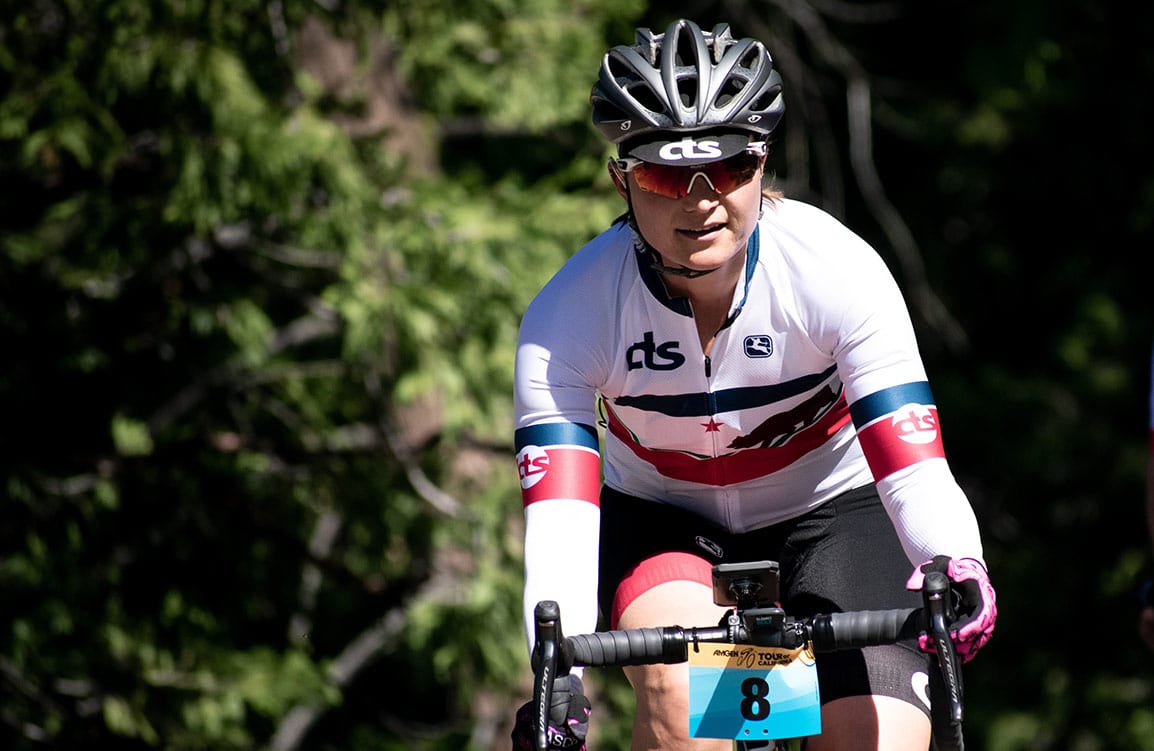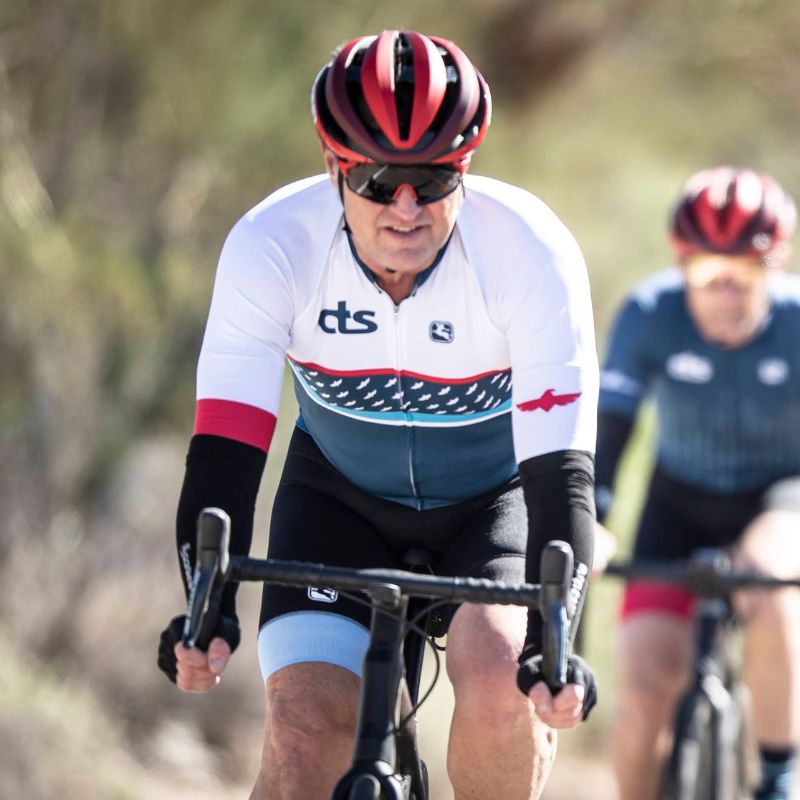
Read This Before Taking Indoor Cycling Fitness Outside
By Chris Carmichael,
Founder and Head Coach of CTS
As ‘stay at home’ orders gradually ease in various places, more cyclists are making the transition from training indoors to getting back out on the road and trail. If you have been doing the majority of your training for the past few months on a stationary trainer, smart trainer, or rollers, here are some differences to expect in your performance and power outputs.
Before getting to differences in indoor vs outdoor performance, be prepared for more cyclists on the roads, paths, and trails. Over the past two months, the number of people cycling outdoors has been increasing, with a large portion of the increase due to people who are either new to cycling or who haven’t ridden in a long time. Adding the goal-oriented cyclists and triathletes to the mix will increase bicycle traffic even further. As long as we all maintain good hygiene habits, comply with local regulations (particularly around group rides!), and work to keep each other safe, there’s plenty of space for everyone and more people on bikes is a good thing.
Now, here’s what to expect from your own performance as you get back outside:
Hills feel like hills
For those of you who have been riding with interactive apps like Zwift, you may have adjusted the “trainer difficulty” setting in the app, which adjusts the trainer’s response to changes in gradient. Lowering this setting doesn’t reduce the power necessary to get to the top of a climb, but it makes the changes in gradient – and hence the change in resistance – less abrupt than in real life. It essentially smooths out some of the undulations so you can maintain a steadier effort.
The difficulty (or realism) setting obviously doesn’t exist in the real world, so you’ll feel every degree of the steep ramps on local hills. It will make a difference when you roll to the base of a hill that starts out steep, because the resistance you feel will build more quickly.
Power output will likely increase outdoors
Cyclists often find they can produce higher power outputs outdoors at a given perceived exertion and heart rate compared to riding indoors. Some of the difference is mechanical, particularly if you are using a trainer that keeps the bike in a fixed and static position. Outdoors, the bike moves under you, and for many riders that side to side movement plays a role in aligning the ankle, knee, and hip for a powerful stroke. Too much movement can be a sign of weakness in the hips and core, but that’s a topic for another day. Trainers that allow the bike to move under you will help replicate this side to side movement, so those riders may see less of a power drop moving indoors.
Some of the difference in power output from indoors to outdoors may be due to the sensory cues we get outdoors, the sensation of speed, wind in your face, and landmarks zipping by. When you get out of the saddle, a little bit of the increase comes from using upper body strength, but more comes from being able to move the bike under you to more effectively use your muscles and bodyweight to push the pedal down.
► Free Cycling Training Assessment Quiz
Take our free 2-minute quiz to discover how effective your training is and get recommendations for how you can improve.
Your pedal stroke may be smoother
A choppy pedal stroke is more evident to riders when their bike is locked into a trainer or sitting atop rollers, and those sensations provide the feedback necessary to smooth it out. If your pedal stroke got smoother from riding indoors, it is likely because you started kicking over the top and pulling through the bottom of the stroke more than before. These are good habits to retain and continue building on as you transition to outdoor riding.
Your hydration cues have to adapt
Overheating is one of the greatest challenges to training effectively while cycling indoors, and it’s another reason cyclists are often able to produce more power outdoors (particularly for prolonged efforts). Fans are good, but rarely produce airflow anywhere near what you experience outdoors. The sweat dripping from your nose and the growing puddle on the floor are effective cues for reminding athletes to drink. Outdoors you may sweat nearly as profusely as indoors, depending on the air temperature, humidity, and effort level; but more is likely to evaporate. That’s a good thing, because sweat that drips off your body removes less heat than sweat that evaporates off your skin. You just have to be careful to recalibrate your cues for hydrating, because your sweat rate will likely be less noticeable.
Your hardest intervals may not be as powerful
Safety and focus are two reasons some athletes do their hardest interval workouts on an indoor trainer even when they could do them outdoors. If you want to completely empty the tank and end an interval cross eyed and hunched over the bars, you can do that indoors without crashing. Outdoors, you always have to reserve a bit of focus and technical ability to pay attention to traffic, curves, potholes, and staying upright.
Ramp up your internal motivation
Ergometer mode on a smart trainer is awesome for performing perfect interval workouts because the trainer pegs you at the target power output for the exact amount of prescribed time and then drops the resistance at the end of each effort. There is a difference between responding to resistance applied and conjuring the internal motivation to produce – and sustain – power. Riding at 130% of threshold power for 3 minutes is one thing when the trainer is sets the resistance. It’s another when you have to reach 130% and hold 130% of threshold on your own. When it’s time to get back to group rides and events, the drive to produce big power numbers has to come from within.
► FREE Mini-Course: Learn How to Maximize Your Limited Training Time
Learn step-by-step how to overcome limited training time and get faster. Walk away with a personalized plan to increase your performance.
"*" indicates required fields


Comments 5
Pingback: 7 Cycling Tips to Climb Any Hill (or Mountain) Faster - CTS
Been lucky enough to combine some outdoor riding with indoor training in Australia and feel that I cannot produced anywhere need the power outdoors compared to indoors. Only difference is that I do not have a power meter outdoors compared to indoors. Must be mainly mental with the effects of perception, riding solo and the wind, etc as when I caught up with a friend after 50 km of feeling broken I felt like a new rider. Looking forward to bunch rides again.
Chris, l want to thank you for the no nonsense article which confirms my impression of generating higher power outdoors. I have just completed my first CTS month training plan via Strava Summit and although l have not yet cracked my PB from 2015, l am well on track. Every aspect of your training plan is spot on, and although l have many years riding behind me this is the clearest structured plan l have ever followed. It is definitely working. Watch this space. Regards, Peter
Thank you Chris. All your weekend emails are so relevant to what we are experiencing at that moment. Best regards Martin
Thanks, all great to know! Also, sweat in the eyes really stings for a few rides outside! And, my butt feels better riding outside. one more, neck muscles may feel the addition of helmet weight outdoors.